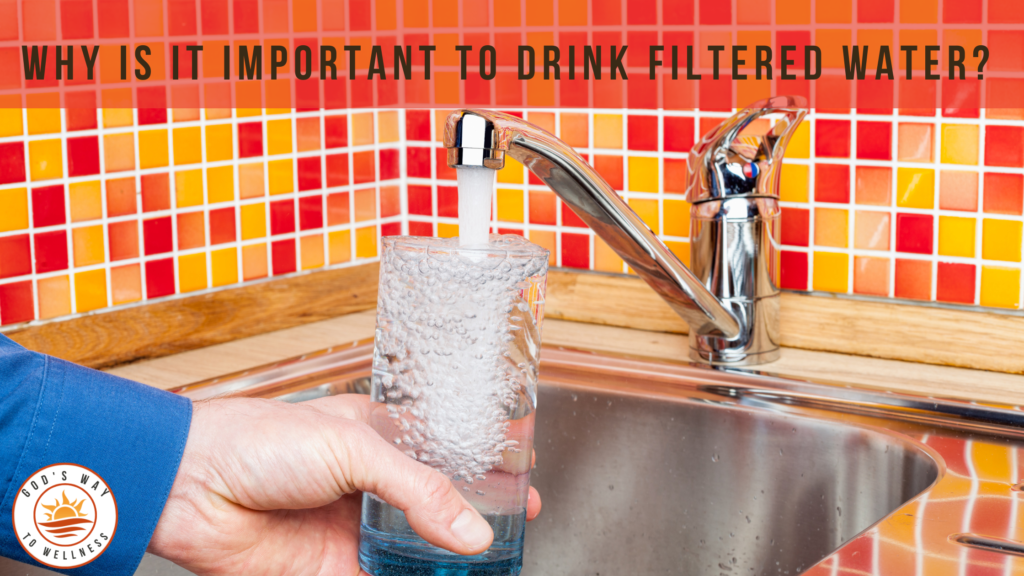It’s simple. Turn on the tap, fill your glass and drink. Do you take safe tap water for granted?
Breaking news from the Environmental Protection Agency reveals 26 million people in hundreds of communities have the toxic “forever chemicals” known as PFAS in their drinking water.
The EPA is finally making progress with new stricter limits for contamination of these chemicals. But meanwhile we drink water contaminated with toxic PFAS in over 2,800 locations in 50 states, the District of Columbia and two territories. 1
What are PFAS and why is it important to drink filtered water?
What are PFAS?
Per- and polyfluorinated alkyl substances known as PFAS are man-made chemicals used in industry and consumer products worldwide since the 1940s. There are at least 12,000 types of PFAS, and more are being developed.
They pollute water, do not break down, and remain in the environment and people for decades. A recent study suggests there is at least one type of PFAS detected in 45% of US drinking water samples. 2
Nonstick cookware, water-repellent clothing, stain resistant fabrics and carpets, cosmetics, firefighting foams, and products that resist grease, water, and oil are just a few products containing PFAS.3
What are the health risks associated with PFAS?
High levels of PFAS are linked to various diseases and conditions. 4 5 6 7
- Increased cholesterol levels
- Changes in liver enzymes
- Increased risk of high blood pressure or pre-eclampsia in pregnant women
- Increased risk of kidney or testicular cancer
- Thyroid disease
- Decreased fertility
- Developmental effects or delays in children
- Reduced ability to fight infections
- Interference with the body’s hormones
- Increased risk of obesity
Can I drink bottled water to avoid PFAS?
Currently, there are no regulations for PFAS in bottled water. However, research studies show 39% of bottled water samples contained PFAS. So bottled water may or may not contain PFAS.8
There are other issues with drinking bottled water. For example, most plastic bottles are not recycled, and end up in a landfill. 9
What can we do?
- Drink filtered water and cook with it too. Find out more about water filters here. (Using filtered tap water is especially important if you are pregnant, nursing, or mixing baby formula.)
- Change your water filters on time.
- Download EWG Guide to Safe Drinking Water.
- Check the safety of your tap water. (Municipal water filter systems do not filter out PFAS.)
Note: I use ZeroWater filters because they filter 100% of PFAS. Brita filters filter 66% of PFAS according to testing by the Environmental Working Group.
Other ways to avoid exposure to PFAS
- Check out my previous post, What Is PFAS, And Why Should We Care?
- Download 10 Things You Can Do About Toxic PFAS Chemicals.
Conclusion
The presence of PFAS in our drinking water is an enormous environmental and public health concern. We have a lot of work to do to find a mechanism to filter these chemicals from our water supply. In the meantime, decrease your exposure to PFAS by drinking filtered water.
References
- https://www.ewg.org/news-insights/news-release/2023/08/epa-pfas-drinking-water-crisis-worse-previously-reported
- https://www.sciencedirect.com/science/article/pii/S0160412023003069?via%3Dihub
- https://www.atsdr.cdc.gov/pfas/health-effects/overview.html
- https://www.atsdr.cdc.gov/pfas/health-effects/index.html
- https://www.epa.gov/pfas/our-current-understanding-human-health-and-environmental-risks-pfas
- https://www.webmd.com/a-to-z-guides/what-is-pfas
- https://www.cnn.com/2023/07/05/health/pfas-nearly-half-us-tap-water-wellness/index.html
- https://www.sciencedirect.com/science/article/abs/pii/S0043135421004905
- https://www.npr.org/2022/10/24/1131131088/recycling-plastic-is-practically-impossible-and-the-problem-is-getting-worse



